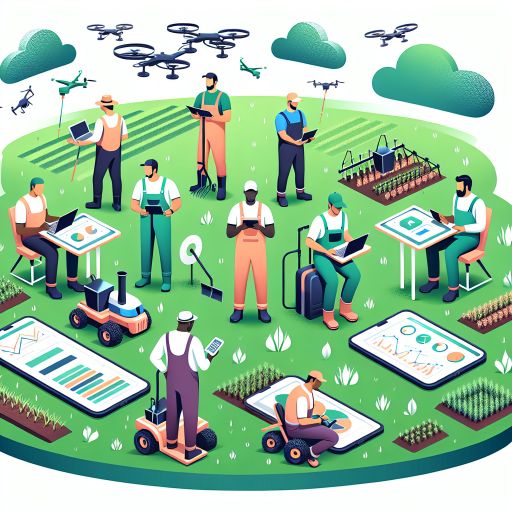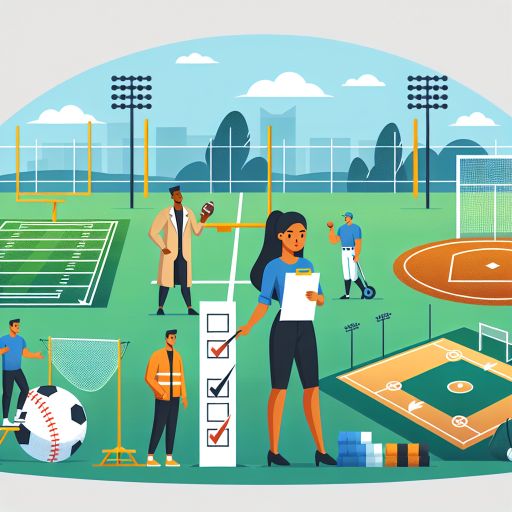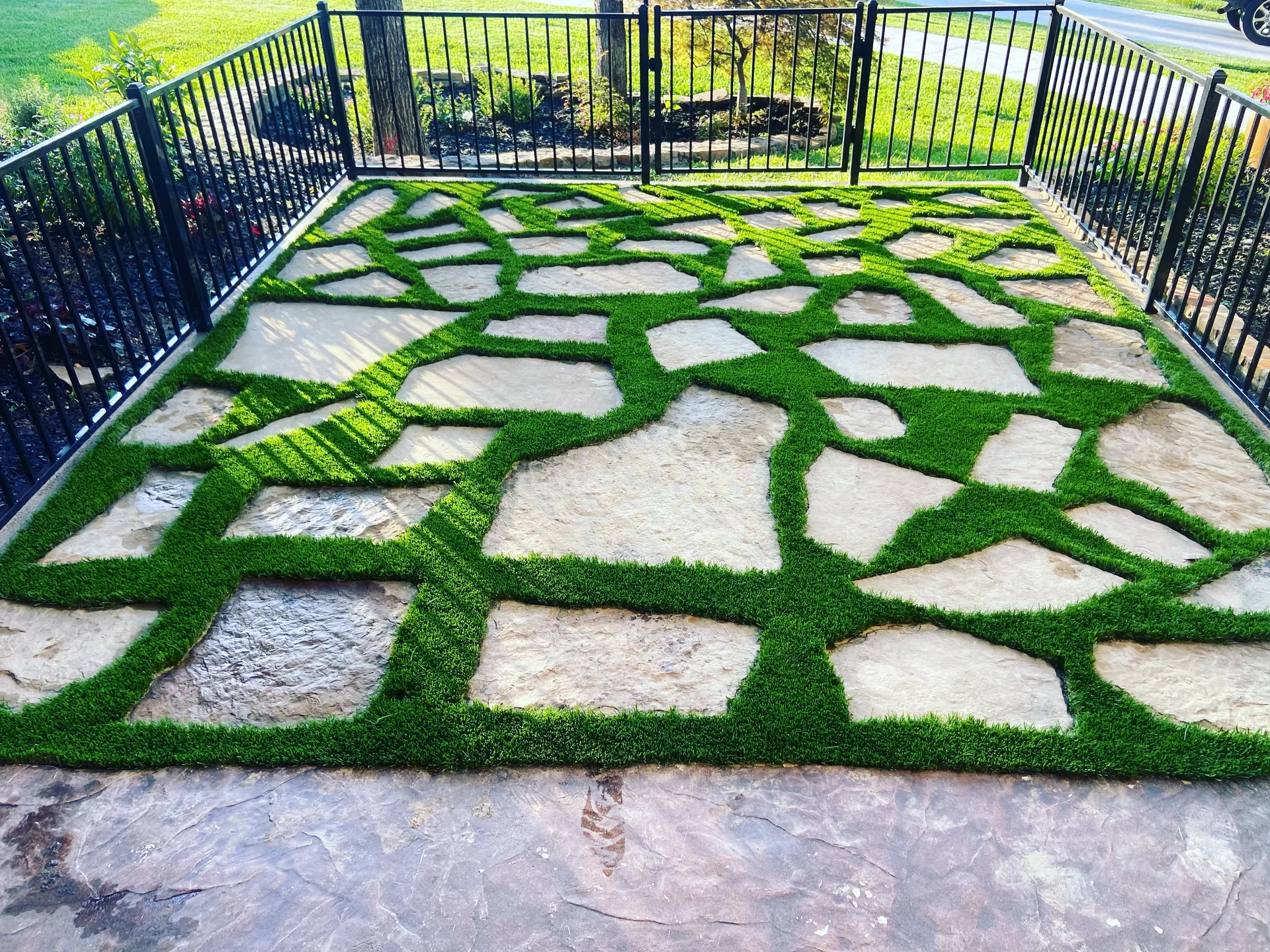
- Introduction to Sports Turf Technology and Its Importance
- Advances in Synthetic Turf: Materials and Technologies
- Environmental and Economical Sustainability in Turf Management
- The Role of Data and Precision Agriculture in Turf Maintenance
- Health and Safety Considerations for Modern Sports Fields
- Future Trends and Predictions in Sports Turf Technology
Introduction to Sports Turf Technology and Its Importance
The development of sports turf technology has seen significant advancements in recent years. These innovations play a crucial role in enhancing the quality, safety, and performance of athletic fields. The primary focus has been on creating surfaces that can withstand rigorous use while providing optimal conditions for athletes.
Sports turf is divided into two main categories: natural grass and synthetic turf. Each type has its own set of technologies and maintenance practices aimed at achieving specific performance objectives.
Natural grass fields have traditionally been the standard for many sports. Advances in turfgrass science have led to the development of grass varieties that are more resistant to disease, drought, and heavy usage. These varieties are often the result of extensive research at agricultural and horticultural institutions.
Key Advantages of Natural Grass:
- Natural cooling effect
- Lower injury rates
- Biodegradability
Meanwhile, synthetic turf has been gaining popularity due to its durability and lower maintenance requirements. Modern synthetic turf systems incorporate materials such as polyethylene, polypropylene, and nylon to mimic the look and feel of natural grass while providing enhanced durability.
Key Advantages of Synthetic Turf:
- Year-round usability
- Consistent playing surface
- Reduced water usage
Recent innovations in both natural and synthetic turf include the use of advanced materials and technologies such as hybrid systems, integrated drainage solutions, and shock-absorbing layers. These technologies aim to improve the playability and safety of sports fields.
| Natural Grass | Synthetic Turf |
|---|---|
| Requires regular watering and mowing | Minimal watering needed |
| Higher natural costs due to maintenance | Higher initial installation cost |
| Subject to weather conditions | Usable in a variety of weather conditions |
| Natural soil-based absorption | Integrated drainage systems |
The importance of sports turf technology extends beyond just performance. It also impacts environmental sustainability and player safety. As these technologies continue to evolve, they promise to deliver even more effective and sustainable solutions for athletic fields worldwide.
Advances in Synthetic Turf: Materials and Technologies
The development of synthetic turf has experienced significant advancements in recent years, driven by innovations in materials and technologies. These advancements have made artificial fields more durable, safer, and environmentally friendly. The primary focus has been on improving the quality and performance of synthetic turf to meet the growing demands of various sports disciplines.
Material Innovations
The materials used in synthetic turf have evolved from basic nylon and polyethylene to more sophisticated blends. Modern synthetic turfs often use polyethylene fibers due to their superior combination of durability and softness. Polypropylene is also used, especially in applications requiring a more robust surface.
One of the key material improvements has been the development of advanced polymer blends that offer enhanced resilience and longevity. These materials maintain their shape and structural integrity despite extensive use and harsh weather conditions.
Infill Technologies
Infill materials play a critical role in the performance and safety of synthetic turf. Traditional infill materials include sand and rubber crumbs. However, advancements have led to the use of more innovative infill options.
- Cork and Coconut Husk: These organic materials provide a sustainable alternative to traditional infills. They offer excellent shock absorption and thermal insulation properties.
- Thermoplastic Elastomers (TPE): TPE infills are gaining popularity for their durability, consistent performance, and lower environmental impact compared to rubber granules.
- EPDM Rubber: Ethylene Propylene Diene Monomer (EPDM) rubber infills provide enhanced resilience and are less abrasive than traditional rubber options.
Shock Pad Systems
Shock pad systems have become an integral component of synthetic turf installations, primarily for enhancing player safety and comfort. These pads are placed beneath the turf to absorb impact and reduce the risk of injuries. The two primary types of shock pads are:
- Prefabricated Shock Pads: These are made from materials such as foam or rubber and offer consistent shock absorption.
- In-Situ Shock Pads: These are created on-site using polyurethane or rubber binders mixed with recycled materials, providing a customizable solution.
Cooling Technologies
One of the challenges with synthetic turf has been its tendency to retain heat, making it uncomfortable and potentially hazardous for players. Modern cooling technologies aim to address this issue by incorporating innovative solutions:
- Cooling Infill: Materials like infill treated with cooling agents reduce the temperature of the playing surface.
- Hydrophilic Coating: Special coatings that retain moisture to help cool the surface as the water evaporates.
The following table provides a summary of the key materials and technologies used in modern synthetic turf:
| Material/Technology | Key Attributes |
|---|---|
| Polyethylene Fibers | Durable, soft, UV-resistant |
| Thermoplastic Elastomers (TPE) Infill | Consistent performance, lower environmental impact |
| Shock Pads | Enhanced player safety, impact absorption |
| Cooling Infill | Reduced surface temperature |
Overall, these advancements in synthetic turf materials and technologies continue to pave the way for safer, more sustainable, and high-performing athletic fields. As research and development progress, further improvements are anticipated, ensuring that synthetic turf remains a viable and beneficial option for sports facilities worldwide.
Environmental and Economical Sustainability in Turf Management
Environmental and Economical Sustainability in Turf Management
As the demand for high-quality sports fields continues to grow, the principles of environmental and economical sustainability in turf management have gained significant importance. The efforts to achieve sustainability focus on reducing the ecological footprint while ensuring that turf remains cost-effective to maintain.
Water Conservation Strategies
One of the principal areas of focus in sustainable turf management is water conservation. Traditional grass fields are highly water-intensive. Hence, modern practices now incorporate advanced irrigation systems such as smart irrigation technologies and soil moisture sensors which optimize water usage.
- Smart Irrigation Systems: These systems use real-time weather data and soil moisture readings to adjust watering schedules and amounts, significantly reducing water waste.
- Soil Moisture Sensors: These devices measure the exact moisture levels in the soil and relay this data to automatic controllers, ensuring that water is applied only when necessary.
Use of Sustainable Materials
Incorporating sustainable and recyclable materials in turf management is another significant step towards environmental sustainability. Innovations are being focused on the composition and lifecycle of these materials.
- Eco-Friendly Turf Mats: Some modern synthetic turfs are made from recycled and recyclable materials, reducing their environmental impact.
- Organic Fertilizers: Using organic and slow-release fertilizers helps to maintain soil health and reduce chemical run-off.
Energy Efficiency
Energy efficiency is a critical consideration in reducing the carbon footprint of turf management. This is achieved through the utilization of energy-efficient equipment and renewable energy sources.
- LED Lighting: The use of energy-efficient LED lights for night-time games and maintenance activities has seen a rise, reducing energy consumption significantly.
- Solar-Powered Equipment: Employing solar panels for powering maintenance equipment and irrigation systems can further reduce reliance on non-renewable energy sources.
Cost Efficiency
Economic sustainability involves reducing the costs associated with turf management while maximizing the financial return from its maintenance. This includes initial setup, long-term maintenance, and operational costs.
- Predictive Maintenance: Utilizing data analytics to predict and prevent issues before they occur can save costs associated with reactive maintenance.
- Long-Lasting Materials: Investing in high-quality, durable turf products may come with higher initial costs but will significantly reduce replacement and repair expenses over time.
In conclusion, the path towards sustainable turf management involves a multifaceted approach that includes conserving water, using sustainable materials, emphasizing energy efficiency, and achieving cost efficiency. By adopting these practices, the sports turf industry can make significant strides towards reducing its environmental impact while maintaining economic viability.
The Role of Data and Precision Agriculture in Turf Maintenance
The integration of data and precision agriculture into turf maintenance is transforming how athletic fields are managed. This chapter explores the technological advancements and methodologies that are shaping the future of sports turf management.
Precision agriculture involves using technology to ensure crops and soils receive exactly what they need for optimum health and productivity. When applied to turf maintenance, this approach focuses on targeted interventions based on real-time data, ensuring high quality, consistent playing surfaces.
One of the primary tools used in this area is soil sensors. These devices measure various parameters including moisture levels, pH balance, and nutrient content. Armed with this information, groundskeepers can make informed decisions about irrigation and fertilization, reducing waste and promoting healthier turf growth.
Data from these sensors can be integrated into sophisticated management platforms that use algorithms to predict maintenance needs. Combining historical data with real-time conditions allows for the development of precise maintenance schedules that optimize resource use and extend the longevity of the turf.
- Economic Efficiency: Applying resources more accurately reduces overall costs.
- Environmental Benefits: Minimizes overuse of water and chemicals, protecting local ecosystems.
- Quality Control: Ensures a consistently high-quality playing surface.
Another technological innovation in this space is the use of drones for aerial surveillance of athletic fields. Equipped with infrared and multi-spectral cameras, drones can quickly assess large areas, identifying trouble spots that might require targeted attention.
The following table summarizes the key technologies utilized in precision turf maintenance:
| Technology | Application |
|---|---|
| Soil Sensors | Measure moisture, pH, and nutrient levels |
| Management Platforms | Integrate sensor data for predictive maintenance |
| Drones | Conduct aerial surveillance to identify problem areas |
| Automated Mowers | Provide precise, consistent mowing without human intervention |
Automated mowers are another example of precision technology making inroads into turf maintenance. These devices use GPS guidance and sensor data to mow fields with high precision, ensuring even cutting and optimal grass health while reducing labor costs.
The role of data and precision agriculture in turf maintenance is not just about efficiency but also about sustainability. By leveraging these technologies, sports facilities can maintain high-quality fields while conserving resources and minimizing their environmental footprint. As the technology continues to evolve, its applications and benefits are expected to grow exponentially.
Health and Safety Considerations for Modern Sports Fields
When discussing modern sports fields, health and safety considerations are paramount. Ensuring that athletic fields are safe for athletes significantly influences the design, material selection, and ongoing maintenance of these spaces.
Injury Prevention
Various studies have indicated that the type of turf can impact the incidence of sports-related injuries. According to research from the American Journal of Sports Medicine, natural grass surfaces tend to have lower rates of injuries compared to synthetic surfaces. However, advanced synthetic turfs are being developed to mimic the performance and safety characteristics of natural grass. These advancements include innovations like shock-absorbing layers and improved fiber materials.
Heat Management
One critical safety concern with synthetic turf is its tendency to retain heat. Synthetic surfaces can become significantly hotter than natural grass, leading to increased risk of heat-related illnesses. To combat this issue, manufacturers are incorporating infill materials that reflect sunlight and dissipate heat. For example, newer infill types like coated sand and organic infills remain cooler under direct sunlight, reducing surface temperatures by several degrees.
Surface Consistency
The consistency of the playing surface is crucial for athlete safety. Uneven surfaces can lead to trips, falls, and other injuries. Proper maintenance and regular inspections are essential to ensure a consistent playing surface. Advances in maintenance equipment, such as automated grooming machines for synthetic turf and precision mowing systems for natural grass, contribute to maintaining an even and safe playing area.
Material Safety
Concerns about the materials used in synthetic turf, particularly the infill, have led to increased scrutiny. Traditional crumb rubber infill, made from recycled tires, has raised health concerns due to the presence of chemicals and heavy metals. The industry is now focusing on safer alternatives, such as TPE (thermoplastic elastomer) and organic infills like coconut husk and cork, which pose fewer health risks.
Case Studies and Data Analysis
Several organizations have been collecting data and analyzing the safety aspects of various turf systems. For instance, the NFL’s annual Playing Surfaces Committee Report provides insights into injury rates on different types of surfaces. Comparative studies highlight the progress made in synthetic turf technologies in reducing injury rates and enhancing player performance.
Regulatory Guidelines
To standardize safety measures, various bodies such as FIFA and the International Rugby Board have established guidelines and certification processes for sports turf. Compliance with these standards ensures that fields meet specific safety criteria, including shock absorption, rotational resistance, and surface stability.
| Parameter | Standard |
|---|---|
| Shock Absorption | 60-70% |
| Rotational Resistance | 30-35 Nm |
| Surface Stability | No displacement greater than 10 mm |
In conclusion, health and safety considerations for modern sports fields encompass multiple factors ranging from injury prevention and heat management to material safety and surface consistency. Continual advancements and adherence to regulatory standards play a pivotal role in ensuring safer playing environments for athletes.
Future Trends and Predictions in Sports Turf Technology
Sports turf technology is constantly evolving, driven by advances in materials science, environmental sustainability, and data analytics. As we look ahead, several key trends are poised to transform the landscape of athletic fields.
Advanced Material Innovations: Emerging materials are set to revolutionize sports turf. Researchers are developing fibers that better mimic the natural feel and resilience of grass. Innovations such as thermoplastic elastomers offer enhanced durability, reduced abrasion injuries, and superior performance in varying weather conditions.
Smart Turf Systems: Integration of IoT (Internet of Things) and sensor technology is another significant trend. Smart turf systems can monitor soil moisture, temperature, and turf health in real-time, providing valuable data to groundskeepers. These systems enable more precise irrigation and maintenance schedules, optimizing water usage and ensuring optimal playing conditions.
Biodegradable and Recyclable Turfs: Environmental concerns are at the forefront of new turf technologies. Companies are developing turfs made from biodegradable materials, which reduce the environmental impact once the turf reaches the end of its useful life. Additionally, advancements in recycling old synthetic turf into new products help minimize waste and resource use.
Multi-functional Sports Fields: Future sports fields are likely to be more versatile, catering to multiple sports by incorporating adaptable features. Hybrid turfs, which combine natural grass with synthetic fibers, offer durability and flexibility necessary for hosting various sporting events on the same field with minimal turnaround time.
Enhanced Maintenance Protocols: Artificial intelligence (AI) and machine learning can revolutionize how maintenance is conducted. Predictive analytics can forecast wear and tear, enabling proactive maintenance before issues become significant. AI-driven robots could automate routine tasks like mowing, watering, and soil aeration, ensuring consistency and reducing labor costs.
Player Experience and Performance: Ultimately, player experience remains a driving factor. Future turfs aim to provide optimal playing surfaces that enhance athlete performance while minimizing injury risks. Innovations focusing on shock absorption, surface traction, and energy return can help create safer and more responsive playing environments.
Conclusion: The future of sports turf technology is a blend of innovation, sustainability, and enhanced user experience. As these trends take shape, athletic fields will become smarter, more environmentally friendly, and better tailored to the needs of both players and managers.


